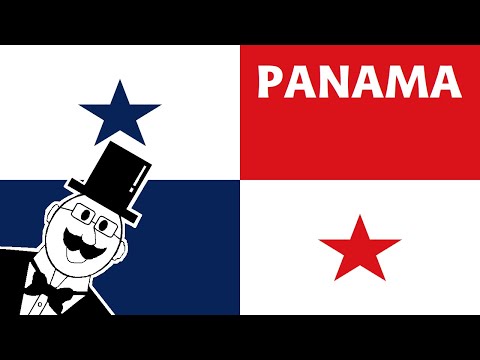What is the Panama Canal brief explanation
The Panama Canal is a man-made waterway that connects the Atlantic Ocean with the Pacific Ocean through the Isthmus of Panama. It is considered one of the greatest engineering achievements in modern history and has had a significant impact on global trade and transportation.
What is the brief history of the country Panama
Panama, located in Central America, has a rich and complex history. It was originally inhabited by indigenous peoples, such as the Kuna, Choco, and Ngobe-Bugle. In 1501, the Spanish arrived and claimed the territory as part of their empire. Panama later became a crucial hub for Spanish trade routes, as it served as a link between South America and the Caribbean.
In 1821, Panama gained independence from Spain and joined the Republic of Gran Colombia, which also included present-day Colombia, Ecuador, and Venezuela. However, this union was short-lived, and Panama became part of the independent Republic of Colombia in 1831. The desire for autonomy and economic control eventually led to Panama’s separation from Colombia in 1903.
Since then, Panama has experienced political stability and has become one of the fastest-growing economies in Latin America. It is known for its vibrant culture, diverse wildlife, and the famous Panama Canal.
What happened to the Panama Canal in 1914
In 1914, the construction of the Panama Canal was completed, marking a significant milestone in global transportation. The canal drastically reduced travel time and costs for ships, as they no longer needed to sail around the treacherous Cape Horn or navigate the lengthy journey through the Strait of Magellan.
The United States played a major role in the construction of the canal. In 1903, the U.S. signed the Hay-Bunau-Varilla Treaty with Panama, granting them control over a 10-mile-wide zone to build and operate the canal. The construction took approximately 10 years and involved overcoming numerous challenges, including disease, engineering difficulties, and labor disputes.
On August 15, 1914, the SS Ancon became the first ship to officially transit the Panama Canal, marking the opening of the waterway to international trade. Since then, the canal has played a vital role in global commerce, facilitating the passage of millions of ships and generating revenue for Panama.
The importance of the Panama Canal
The Panama Canal has had a profound impact on global trade and transportation. It serves as a vital link between the Atlantic and Pacific Oceans, allowing ships to avoid the lengthy and dangerous journey around South America. The canal has significantly reduced travel distances and costs, making it a crucial route for international shipping.
It has also had a positive economic impact on Panama. The revenue generated from canal tolls has contributed to the country’s economic growth and development. Additionally, the canal has created employment opportunities and stimulated various industries, such as tourism and logistics.
The engineering marvel of the Panama Canal
The construction of the Panama Canal was a remarkable engineering feat. The canal spans approximately 50 miles and includes a system of locks that allow ships to be lifted and lowered to different water levels. This innovative design overcame the challenge of the varying elevation of the Atlantic and Pacific Oceans.
The construction involved excavating millions of cubic meters of earth and rock, building dams and reservoirs, and creating an artificial lake, known as Gatun Lake, which is one of the largest man-made lakes in the world. The canal’s locks use gravity and water pressure to move ships, and the entire system is powered by a series of hydroelectric plants.
Curiosities about the Panama Canal
The French Connection
Before the United States took over the construction of the Panama Canal, the project was initially attempted by the French in the late 19th century. Led by Ferdinand de Lesseps, who successfully built the Suez Canal, the French faced numerous challenges, including financial difficulties and the deadly outbreaks of malaria and yellow fever. The project was ultimately abandoned after the loss of thousands of lives and millions of dollars.
Locks and Water Conservation
The Panama Canal’s locks not only facilitate the movement of ships but also play a crucial role in water conservation. Each time a ship transits through the canal, water is released from the upper chamber of the locks into the lower chamber, effectively conserving and reusing water for future transits. This sustainable approach helps to preserve the limited freshwater resources in Panama.
The “Canal Zone”
For much of the 20th century, the United States maintained control over a 10-mile-wide strip of land known as the “Canal Zone.” This area, which included the Panama Canal and its surrounding infrastructure, was treated as U.S. territory and governed by American authorities. However, in 1977, the Torrijos-Carter Treaties were signed, transferring control of the canal and the Canal Zone back to Panama in 1999.
Expansion of the Panama Canal
In 2016, a major expansion of the Panama Canal was completed, allowing larger “New Panamax” ships to transit through the waterway. The expansion included the construction of new locks, deeper navigation channels, and the widening of existing channels. This expansion has further enhanced the canal’s capacity and efficiency, accommodating the growing demand for larger vessels.
Frequently Asked Questions about The History of the Panama Canal: A Brief Overview
1. Who built the Panama Canal?
The Panama Canal was initially attempted by the French in the late 19th century, but it was ultimately completed by the United States.
2. How long did it take to build the Panama Canal?
The construction of the Panama Canal took approximately 10 years, from 1904 to 1914.
3. How much did the Panama Canal cost to build?
The cost of building the Panama Canal was approximately $375 million.
4. How many ships transit through the Panama Canal each year?
On average, over 14,000 ships transit through the Panama Canal each year.
5. How much does it cost to transit through the Panama Canal?
The tolls for transiting through the Panama Canal vary depending on the size and type of the vessel. The average toll for a container ship can range from $150,000 to $450,000.
In conclusion, the Panama Canal has a fascinating history and continues to play a vital role in global trade and transportation. Its construction was a remarkable engineering achievement, and its impact on Panama’s economy and international shipping cannot be overstated. The canal’s expansion and ongoing maintenance ensure its continued relevance in the modern world.

